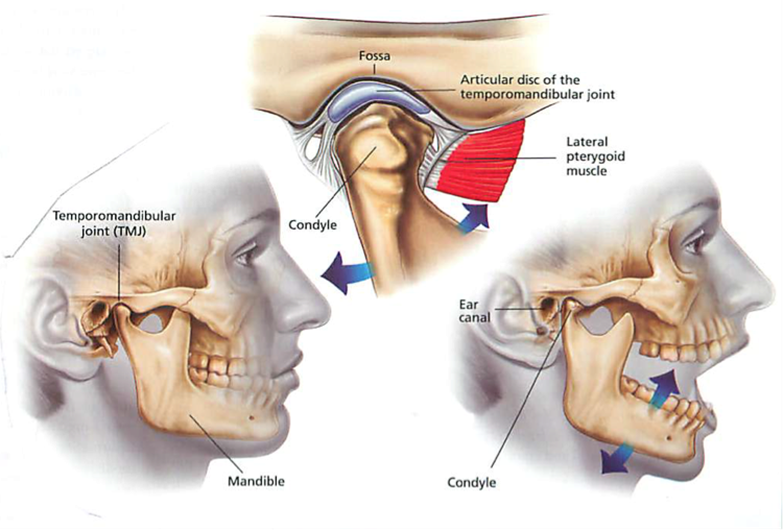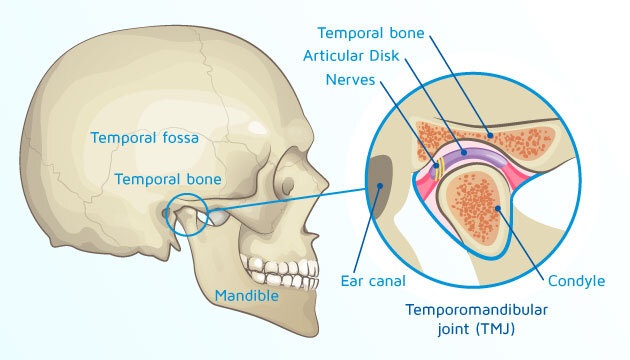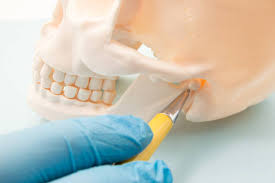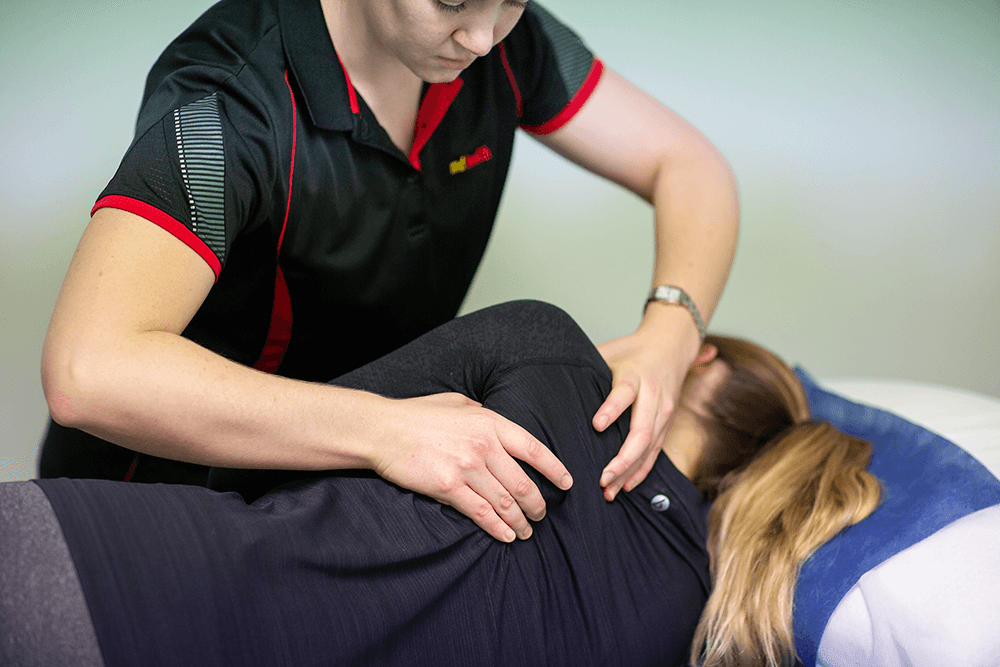Temporo-Mandibular Joint (TMJ) Dysfunction - Fact Sheet
What is a Temporo-Mandibular Joint (TMJ) Dysfunction ?
The jaw is one of the most complex joints, as well as most frequently used joint in the body. It plays an important role in daily functions such as talking, chewing and yawning. It can be felt by placing your fingers just in front of your ears and opening and closing your mouth. Movements of the jaw include a combination of hinge and glide movements, and this allows us to open, close, moves to the side and forwards. TMJ disorders are common, present with mild to severe discomfort and/ or limitation to movement and often resolves on its own with time, and a few changes to the way we use and move the jaw.
.

Causes of Temporo-Mandibular Joint (TMJ) Dysfunction?
The causes of TMJ disorder is generally unknown, and various factors can aggravate the joint, such as:
- Grinding or clenching the teeth, potentially due to emotional and/or physical stress.
- Injuries of the TMJ including fracture or dislocation, or trauma to the head or neck.
- Poorly shaped dental fillings, crowns, bridges, missing teeth, as well as occlusion type (standard/normal, overbite or underbite).
- Poor posture and bad sleeping positions.
- Breathing and mouth habits plus tongue position.

Signs & Symptoms of Temporo-Mandibular Joint (TMJ) Dysfunction?
The symptoms of a TMJ disorder may vary and include:
- Limited jaw movement (difficulty in opening the mouth or the feeling of a locked jaw).
- Clicking, grating or popping noises from the jaw joints.
- Pain when chewing, yawning or opening the jaw widely.
- Pain in or around the ears and cheeks, ear aches and/or ringing, teeth sensitivity or tooth ache.
- Face, neck, back and shoulder pain as well as tooth ache.
- Clenching and grinding of teeth often associated with TMJ pain in the morning.
- Headaches and/or migraines, neck pain or stiffness.
- Breathing issues such as snoring, sleep apnoea, asthma, deviated septum, and allergies.

Diagnosis and Treatment of Temporo-Mandibular Joint (TMJ) Dysfunction?
An accurate diagnosis is important to ensure that the right treatment is provided. This is usually performed by your dentist and we can liaise with them to ensure optimal management. MD Health Physiotherapists and Exercise Physiologists can also diagnose and treat TMJ dysfunctions.
TMJ disorders are best treated conservatively, using treatment methods to help reduce symptoms and restore function. These include; exercises, gentle movement and muscle stretching to reduce pain and stiffness as well as increase strength and mobility of the joint and affected areas such as the neck and shoulder complex.

Temporo-Mandibular Joint (TMJ) Dysfunction – General Advice
Irritation and/or injuries to the jaw joints and/or muscles are common and often resolve with rest. During waking hours, it is possible to minimise activity but when asleep and especially during dreaming (REM) it is common to clench and/or grind the teeth. Below are a few guidelines to help minimise re-injury of the joins, muscles and/or ligaments.
- For the next few months, cut all foods into small, bite-sized pieces and try chew the food on your back teeth. Do not chew gum.
- Avoid biting any food with your front teeth, do not eat hard crusts of bread, tough meat, hard raw vegetables, nuts or any food that requires prolonged chewing.
- Try to avoid opening your mouth wider than the thickness of your thumb, especially if it causes a click or pain. When yawning, try take a deep breath while your mouth is partially open.
- Always try to open your jaw in a hinge or arc motion. Avoid protruding your jaw, for example, when biting off a piece of bread, during conversation or when applying lipstick.
- Warm compresses (eg. wheat bag) held over the tender muscles for about 20minutes at a time followed by massage of the muscles may provide relief.
- Should you find yourself clenching or grinding your teeth together, try to remember to keep your lips together, teeth apart, rest your tongue behind your upper front teeth and maintain good posture.
- Try to breathe through your nose at all times and to hold your head upright and keep your shoulders back for good posture. Correct posture ensures a good position for your jaw joints.
- Try to sleep on your back. If you sleep on your side, ensure that you have adequate pillow support between your shoulders and head. Do not sleep on your jaw. Restful sleep is essential – discuss sleep problems with your doctor.
- Understanding that jaw and/or muscle problems are psycho-physiological in nature, related to injury and stress. Reduction of stress in your life will be of great benefit. Counselling for stress-management, and occasionally medications, may be of benefit.
- It may be necessary for you to wear a plastic splint on your teeth during sleep. The injured joint(s) and associated muscles can then be given some rest and healing can occur.


